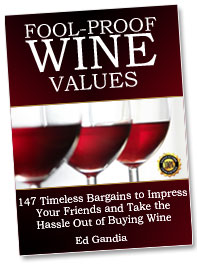Fortified Wines, Pickled Homosapiens
 November 2, 2008
November 2, 2008
Back in the day, before FedX or Brown or mail, when someone in say, England, wanted a wine from say, Portugal, because the English were at war with oh let’s say, France, the wine had to be shipped via ocean vessel. Needless to say it was a long journey for a cask of wine and the wine usually spoiled en route. Then some awesome fellow discovered the wine could be preserved if alcohol, Brandy to be exact, was added to the wine prior to shipping. What happened was it stopped further fermentation of the wine and kept it from spoiling and the increased alcohol from the Brandy prevented oxidation. Well those crazy Brits loved the smoothly sweet wine that arrived and from that point the boys in Portugal capitalized on the idea and now what you get is the product called Port.
Port. Portugal. Port. Portugal. Get it?
Eventually that practice spread throughout southern Europe and though the reasons for making fortified wines have changed today with technology and production values, fortified wines continue to be big sellers throughout the world.
Other fortified wine varieties include Sherry, Madeira and Marsala, just to name the more recognized fortified wines out there. Sherry and Madeira are fortified after fermentation and sugars are added to the wine as needed at that point, while Port and Marsala and the French vins doux naturels made from Muscat are fortified during fermentation; the natural sugars in the wine remain and are not altered.
Now, let me clarify what it means for a wine to be fortified, as the answer may not be clear: to fortify a wine the alcohol content of the wine is raised beyond what yeast fermentation can produce naturally. Brandy or other neutral spirits are added during or after the fermentation process to accomplish this. The end result is a heavier, sweeter wine that has a strong alcoholic nose but subtle alcohol flavors.
A fortified wine’s alcohol content can reach upwards of 21% (still wines range from 11-14%), making it more stable and less prone to spoiling early on. I’m not a big Port drinker myself but I’ve had a bottle last through a winter without turning.
That said, fortified wines are perfect for cold weather nights in front of a fireplace or you might find a bottle circulating among some homeless guys gathered around a burning oil drum in an alley. Good times, nonetheless.
In my next few posts I’m going to continue going further into the fortified wines I mentioned: Port, Madeira, Sherry and Marsala. I’m hoping it will be a fun read as I’ve tried to make all these posts. It can be an in-depth topic but an essential topic if you really want to learn about wine.
No related posts.
 Subscribe
Subscribe
 Posted in
Posted in 



